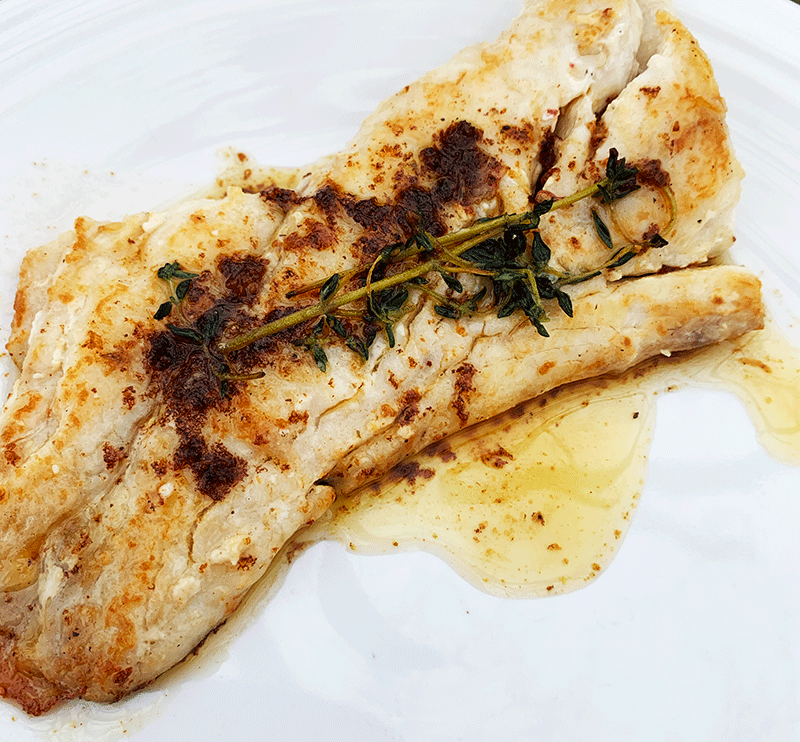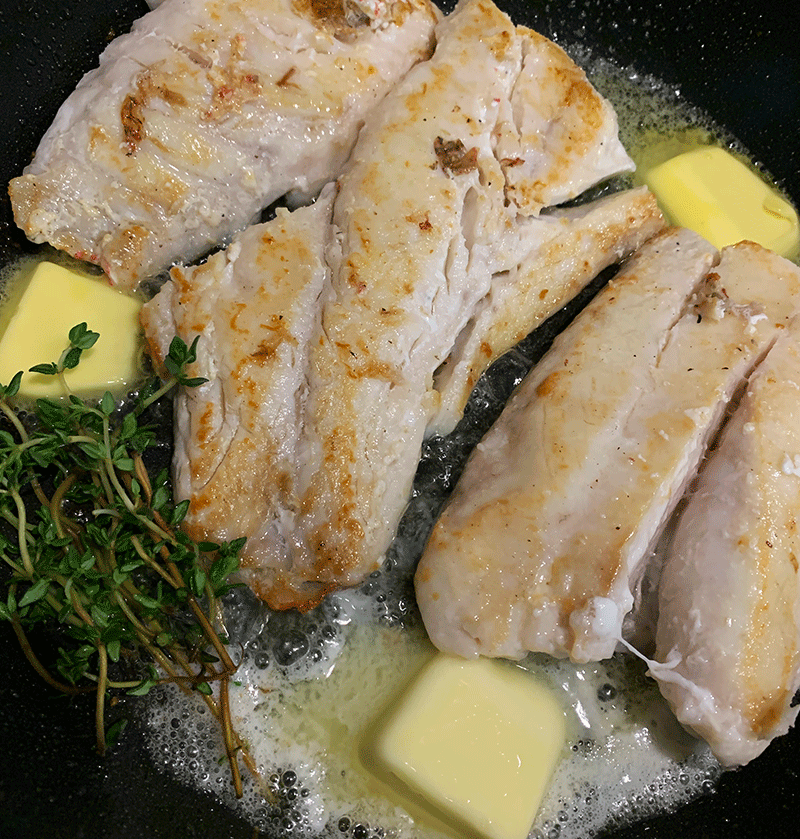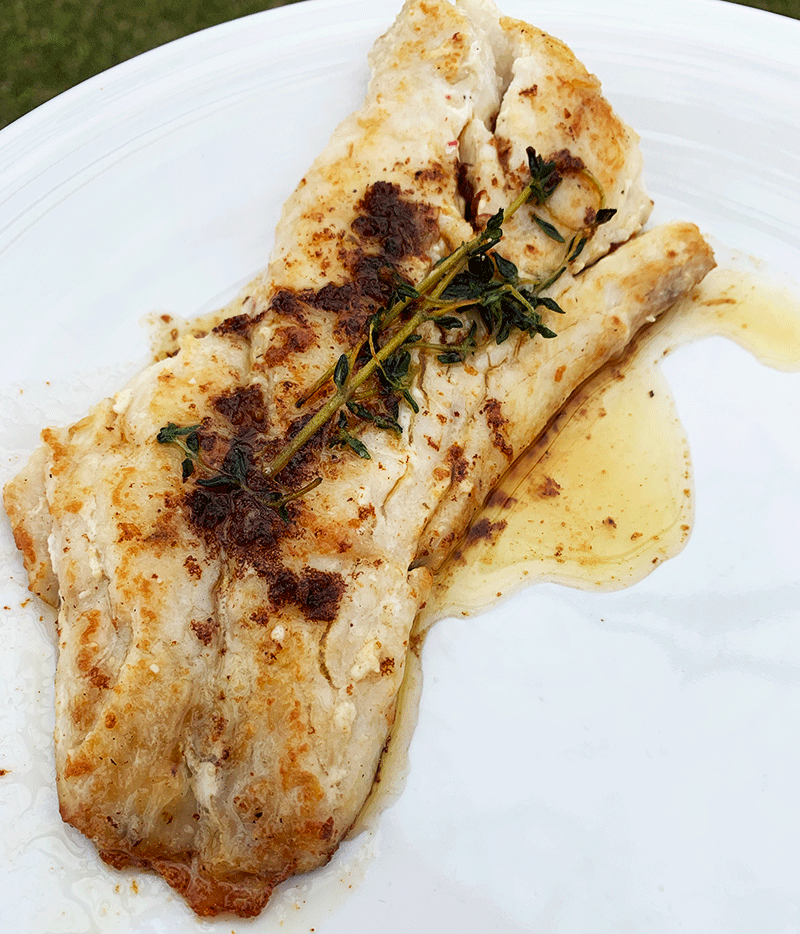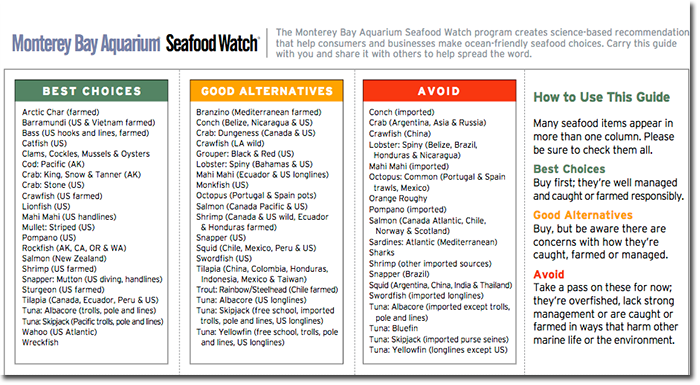

For today’s Friday Feast I’m pleased to share a little trick that I learned this year during my brief stint working in a commercial restaurant kitchen during my “take a peek behind the curtain” look at the food industry.
As it turns out, the executive chef of the team I was working with had spent years running an upscale eatery in the Dallas metro that primarily focused on fresh seafood. The volume of fish and shellfish they prepared and served back in the day was absolutely staggering (Dallas/DFW is a metro that loves eating out), and this gentleman handled fish, shrimp, and oysters with a deft efficiency that was a marvel to watch.
Every time I had a chance I pestered him for tips and tricks that were readily translatable to the home kitchen, and the most useful one he shared was this very preparation that works for almost any fish, though we talked most often about using it for a firm fleshed white fish like red snapper and redfish here in Texas, though flounder, cod, halibut, and several other of course work as well. Leaving skin on one side (on the half shell, at least down here in the South) helps maintain the integrity of the fillet, though of course that’s up to you.
Having been taught over the years to pan sauté fish fillets over higher heat, I was a bit surprised at Chad’s insistence that the best way to prepare this dish was as follows.
Having prepped your fish (trimmed, washed, removed any remaining scales), the fillets need to be patted dry thoroughly while pre-heating a (preferably non-stick or a well-seasoned carbon steel) pan over medium-low heat.
Splash a tablespoon or two of avocado or olive oil in the pan (you’re cooking over lower heat, so olive oil works here), then season the fillets generously with good salt and perhaps a grind of fresh pepper (we also use a fresh cajun spice mix occasionally) and place skin side down in the heated pan.
You need to pay attention here, if the oil smokes, you’re running too hot; removed the pan, turn down the heat, put the pan back over the heat and be patient. Pending how thick your fillets are, you’ll most likely cook for 4-6 minutes before turning, and only after the fish has released from the pan. Don’t try to turn or “scrape it off” if the initial side hasn’t released – it will eventually.
Carefully turn the fillets using a fish spatula if you have one, and then drop in several generous pats of your favorite grass fed butter and a handful of fresh herbs – we’re partial to the magic that thyme brings to the dish, though experiment and try your favorites.
As the butter melts (and it might take a bit of time as you’re cooking over lower heat), tip the pan to one side, pooling the butter, and then spoon it over the fillets as they cook. Continue basting intermittently until the fish is cooked through to your preference.
After removing the fish to warmed plates and topping each with a few sprigs of thyme, squeeze half a lemon’s juice (or more if you wish) into the butter remaining in the pan, stir it in, and spoon over the fillets.
Enjoy this one, you’ll be coming back to it again and again.





